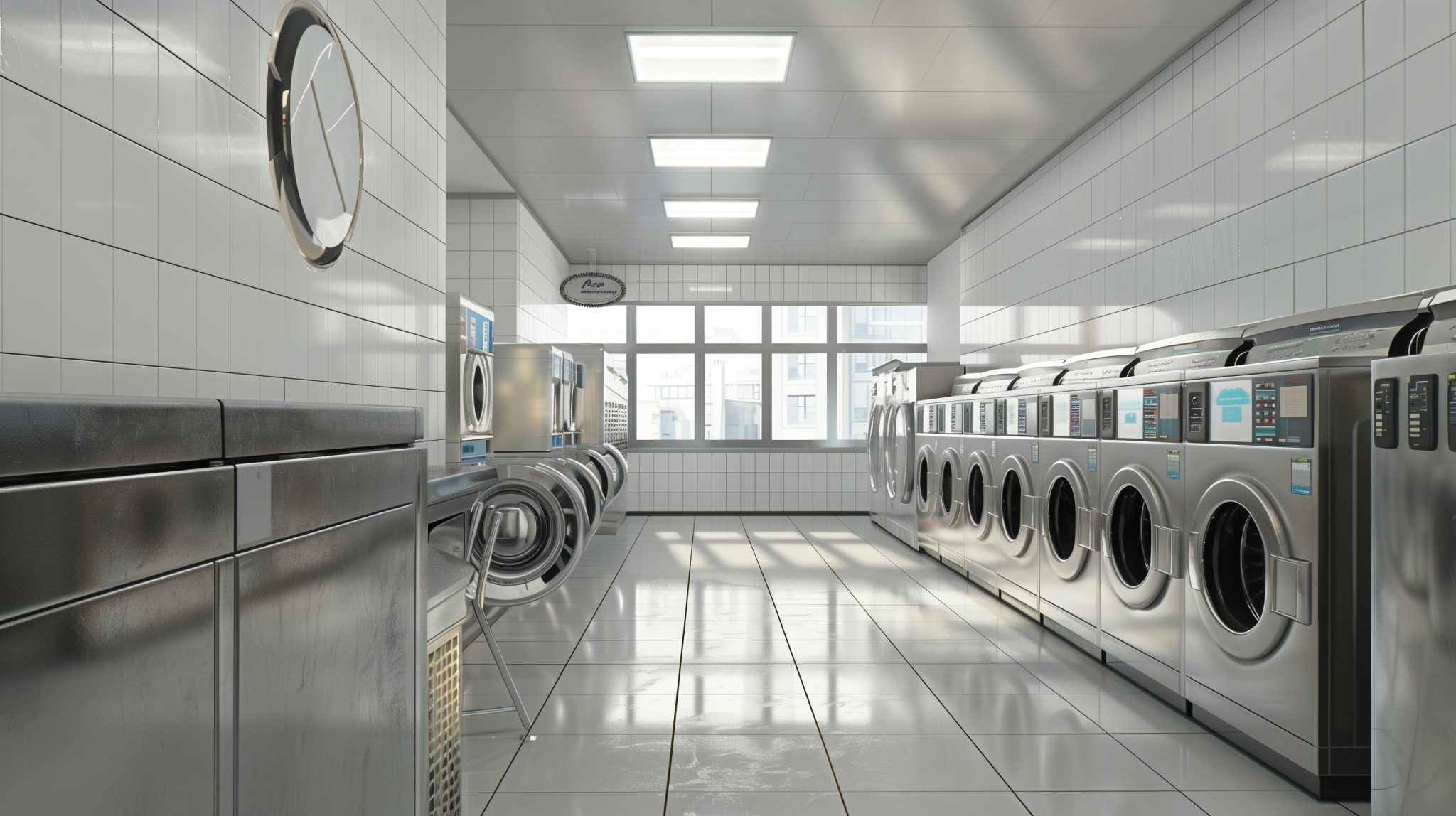Laundromats rely on heavy-duty washers, dryers, and additional machinery that run for hours on end, day after day. According to industry data from the Coin Laundry Association, equipment breakdowns contribute to a significant share of lost revenue, with some estimates suggesting that up to 15% of a laundromat’s monthly income can be affected by machine downtime. Proper maintenance practices not only reduce repair costs and keep customers satisfied, but also prolong the useful life of these costly investments. This guide explores essential tips for preserving your laundromat’s equipment in top condition while minimizing disruptions and operating expenses.
The Value of Routine Cleaning
Cleaning is more than an aesthetic necessity. A buildup of lint, detergent residue, or dirt can cause machines to work harder than they should, reducing energy efficiency and inviting mechanical wear. Regularly wiping down interior surfaces, gaskets, and lint traps prevents grime from accumulating in critical areas. Manufacturers often recommend daily or weekly cleaning routines for both washers and dryers. By adhering to a systematic schedule, operators can remove irritants and extend the life of crucial components. This simple discipline can also improve your laundromat’s overall hygiene, inspiring customer confidence and repeat visits.
Importance of Visual Checks
Routine visual checks enable laundromat owners to spot potential trouble early. Hoses, belts, and external panels can show signs of stress or damage if closely inspected on a regular basis. A small crack in a belt, for instance, can lead to a complete system failure if left unchecked, resulting in costly repairs and frustrated customers. Early detection not only reduces expenses but also creates opportunities to schedule repairs outside of peak business hours. Documenting these inspections in a maintenance log helps staff stay accountable and provides a historical record that can guide future upgrades or replacements.
Lubrication and Part Replacements
Friction wears down the internal parts of laundry machinery over time, making lubrication a key step in preventing excessive wear. In washers and dryers, bearings and other moving parts need proper lubrication at intervals recommended by the manufacturer. Failure to follow these guidelines can lead to overheating, increased energy consumption, and mechanical breakdowns. Replacing worn-out parts before they fail entirely is another best practice. Seals, valves, and belts often degrade from repeated exposure to heat, detergent, and vibration. Proactively swapping these components ensures that small issues do not escalate into major repairs.
Preventive Maintenance Schedules
A preventive maintenance schedule is the backbone of any reliable equipment care program. Rather than waiting until machines grind to a halt, laundromat owners who plan regular check-ups and tune-ups often enjoy fewer emergencies and lower repair bills. In addition, many manufacturers offer preventive maintenance packages or guidelines that include recommended intervals for part inspections, calibrations, and thorough cleanings. These tailored schedules optimize performance, prolong lifespans, and provide peace of mind for both owners and customers. Comprehensive maintenance can also help preserve warranty coverage, protecting against unexpected repair costs down the line.
Stocking Essential Parts
Even with a solid preventive maintenance plan, breakdowns do occur. One way to reduce downtime is by keeping a modest inventory of high-demand spare parts on hand. Common items might include belts, valves, door gaskets, or circuit boards—components known to wear out with regular usage. Having these pieces readily available saves precious time that might otherwise be spent waiting for shipments. Maintaining an on-site inventory does require upfront costs and space, but many laundromat owners find that the ability to address mechanical failures promptly is well worth the investment.
Partnering with Qualified Technicians
While in-house expertise goes a long way toward effective daily maintenance, certain tasks require the skills of a trained technician. Qualified professionals can thoroughly inspect interior components, conduct electrical diagnostics, and perform advanced repairs that extend machine longevity. Establishing a relationship with a reputable service company streamlines emergency response times and ensures routine maintenance is done correctly. Data from the Coin Laundry Association suggests that regular professional servicing can reduce major malfunctions by up to 30%, underscoring the value of expert attention.
Software and Technological Upgrades
Modern washers and dryers often come equipped with digital control systems and performance-monitoring software that can alert owners to potential issues. Updating firmware and software regularly is essential to patch known bugs, enhance efficiency, and enable new diagnostic features. Some systems can even send automated alerts when a machine detects unusual vibrations, water usage anomalies, or temperature fluctuations. Although these upgrades may carry upfront costs, the long-term savings and minimized downtime frequently make the investment worthwhile—particularly in highly competitive markets where reliability sets a business apart.
Managing Energy Efficiency
Equipment maintenance and energy efficiency go hand in hand. Clogged vents or poorly calibrated machines can inflate utility bills by forcing machinery to consume more water, gas, or electricity than necessary. Regular service checks to ensure dryer ducts are clear or that washers are filling accurately can reduce operating costs significantly. According to data from Energy Star, businesses that optimize equipment settings can see energy savings of up to 20%. Over time, these reductions can offset the cost of routine maintenance and build good standing with environmentally conscious customers.
Conclusion
A well-thought-out equipment maintenance strategy can be the difference between a laundromat operating at peak profitability and one mired in frequent downtime and repair bills. By prioritizing routine cleaning, conducting regular visual inspections, adhering to preventive maintenance schedules, and partnering with qualified technicians, owners can keep washers, dryers, and other essential machinery running smoothly. Upgrading digital systems and optimizing energy usage further extends the lifespan of critical equipment, positively impacting both the bottom line and customer satisfaction. Through these practical steps, laundromat operators lay a solid foundation for sustained success and a strong reputation in the community.








